Year :
2013
Title :
Geography
Exam :
JAMB Exam
Paper 1 | Objectives
31 - 40 of 45 Questions
| # | Question | Ans |
|---|---|---|
| 31. |
Which of the following winds is responsible for the dry season in Nigeria? A. Tropical maritime airmass B. Tropical continental airmass C. Equatorial easterlies D. Harmattan |
B |
| 32. |
Which of the following groups is nomadic grazing? A. The Masai of kenya B. The Akans C. Hausas of Nigeria D. The arabs of Algeria |
A |
| 33. |
Which of the following countries has gold as its major foreign exchange earner? A. Nigeria B. Tanzania C. Niger D. South Africa |
D |
| 34. |
Which of the following is the largest country in West Africa? A. Mali B. Niger C. Mauritania D. Nigeria |
B |
| 35. |
Which of the following rivers is an inland drainage? A. River Hadejia B. River Nile C. River Senegal D. River Volta |
A |
| 36. |
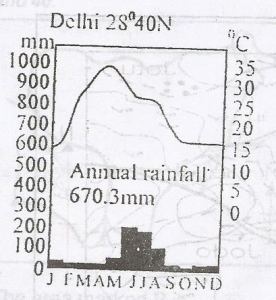 The annual range of temperature of Delhi is A. 15oC B. 19oC C. 20oC D. 35oC |
C |
| 37. |
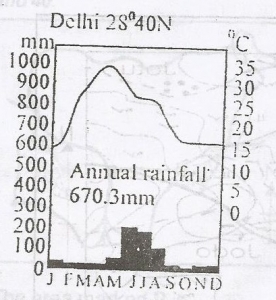 The climate can be described as A. equatorial climate B. tropical monsoon climate C. tropical marine climate D. equatorial monsoon climate |
B |
| 38. |
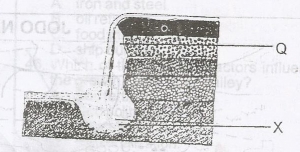 The feature marked X is A. a waterfall B. a plunge pool C. an eroded debris`` D. a bedrock |
B |
| 39. |
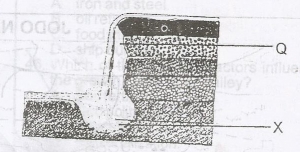 The feature marked Q is A. parent material B. soft rock C. hard rock D. erratic block |
C |
| 40. |
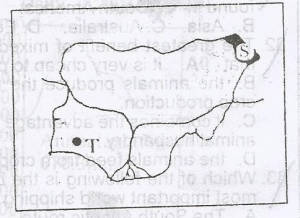 The soil type found in the area marked S is A. sandy soil B. laterite soil C. alluvial soil D. loamy soil |
B |
| 31. |
Which of the following winds is responsible for the dry season in Nigeria? A. Tropical maritime airmass B. Tropical continental airmass C. Equatorial easterlies D. Harmattan |
B |
| 32. |
Which of the following groups is nomadic grazing? A. The Masai of kenya B. The Akans C. Hausas of Nigeria D. The arabs of Algeria |
A |
| 33. |
Which of the following countries has gold as its major foreign exchange earner? A. Nigeria B. Tanzania C. Niger D. South Africa |
D |
| 34. |
Which of the following is the largest country in West Africa? A. Mali B. Niger C. Mauritania D. Nigeria |
B |
| 35. |
Which of the following rivers is an inland drainage? A. River Hadejia B. River Nile C. River Senegal D. River Volta |
A |
| 36. |
 The annual range of temperature of Delhi is A. 15oC B. 19oC C. 20oC D. 35oC |
C |
| 37. |
 The climate can be described as A. equatorial climate B. tropical monsoon climate C. tropical marine climate D. equatorial monsoon climate |
B |
| 38. |
 The feature marked X is A. a waterfall B. a plunge pool C. an eroded debris`` D. a bedrock |
B |
| 39. |
 The feature marked Q is A. parent material B. soft rock C. hard rock D. erratic block |
C |
| 40. |
 The soil type found in the area marked S is A. sandy soil B. laterite soil C. alluvial soil D. loamy soil |
B |